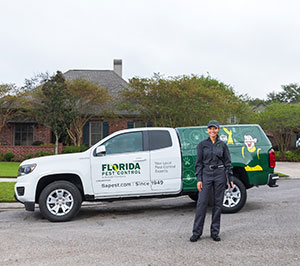Reliable A1 Bed Bug Exterminator Charlotte - Get Rid of Bed Bugs Rapid
Reliable A1 Bed Bug Exterminator Charlotte - Get Rid of Bed Bugs Rapid
Blog Article
Bed Bug Therapy Malfunction: Comparing Chemical Vs. Non-Chemical Solutions
In the world of pest control, particularly when managing the relentless issue of bed insects, the option in between chemical and non-chemical treatment remedies can be a critical one. Both methods supply distinct advantages and disadvantages, affecting variables such as effectiveness, safety factors to consider, and overall cost. By checking out the nuanced information of each technique, a clearer understanding of which path to go after in resolving a bed pest problem can be obtained.
Performance of Chemical Treatments
Chemical therapies for bed insect invasions have been extensively acknowledged for their fast and powerful effectiveness in eliminating these parasites. When taking into consideration the efficiency of chemical therapies, it is critical to recognize that they can provide a detailed and fast solution to a bed bug problem.
Additionally, chemical therapies have the advantage of using recurring results, suggesting that they can remain to get rid of bed bugs also after the initial application. This residual action is especially helpful in combating any potential re-infestations. Furthermore, the quick action of chemical therapies can bring alleviation to individuals encountering severe bed pest problems, permitting them to gain back control of their living areas quickly.
Safety And Security Interest In Chemical Solutions
One important element that requires careful consideration when using chemical remedies for bed insect treatment is making sure the security of passengers and the atmosphere. Direct exposure to certain chemicals used in bed pest treatments can lead to respiratory concerns, skin inflammation, or various other unfavorable reactions, particularly in people with pre-existing conditions or sensitivities.
In addition, the environmental impact of chemical remedies is an additional considerable consideration. Some chemicals utilized in bed bug therapies might be hazardous to beneficial insects, wild animals, and environments if they leach into the dirt or water supply. It is vital to use chemical treatments deliberately, adhering to security guidelines, and taking into consideration less harmful choices to reduce these risks and make certain the safe and effective administration of bed pest problems.
Advantages of Non-Chemical Techniques
Taking into consideration the potential safety problems and ecological influence connected with chemical remedies for bed insect treatment, discovering non-chemical approaches offers an encouraging alternative with a number of distinct advantages. Non-chemical approaches provide a more secure option for homes, especially those with kids, family pets, or people sensitive to severe chemicals. These methods remove the dangers of direct exposure to poisonous materials, lowering the possibility for negative health and wellness impacts. Additionally, non-chemical treatments are eco-friendly, as they do not add to air or water contamination, making them a sustainable selection for parasite control.
In addition, non-chemical remedies can be efficient in targeting bed bugs, including hard-to-reach areas where chemical treatments may not permeate - A1 bed bug exterminator charlotte. Techniques such as warm therapy, vacuuming, vapor cleaning, and mattress encasements offer extensive removal Look At This without the use of unsafe chemicals.
Limitations of Non-Chemical Treatments

Additionally, non-chemical therapies usually require several applications to achieve effective obliteration. This can be time-consuming and might not constantly ensure total removal of all bed insects and their eggs, particularly in surprise or hard-to-reach areas.
Moreover, pest bugs the success of non-chemical therapies greatly depends on correct implementation and thoroughness, which can be challenging for individuals without specialist knowledge. Poor application of non-chemical approaches may result in incomplete elimination, leading to persistent invasions and the need for added treatments.
As a result, while non-chemical therapies have their advantages, it is essential to recognize these constraints and consider them when identifying the most efficient method for managing bed insect problems.
Cost Comparison: Chemical Vs. Non-Chemical Options
Provided the limitations associated with non-chemical therapies, a necessary facet to review in the context of bed pest management is the cost comparison in between chemical and non-chemical options. In comparison, non-chemical treatments like heat therapy or heavy steam can be extra pricey, with prices varying from $1,000 to $6,000 for an entire home. While the first cost of chemical therapies may seem lower, several therapies may be needed to fully get rid of the invasion, potentially boosting the overall price.
Conclusion

Taking into consideration the possible safety problems and environmental effect connected with chemical solutions for bed insect therapy, discovering non-chemical techniques presents a promising alternative with numerous distinct benefits.Offered the constraints linked with non-chemical treatments, an important aspect to examine in the context of bed bug management is the price comparison in between chemical and non-chemical choices. In comparison, non-chemical therapies like warmth therapy or heavy steam can be mice prevention much more pricey, with costs ranging from $1,000 to $6,000 for an entire home. While the initial price of chemical treatments might appear reduced, numerous treatments might be called for to completely eradicate the infestation, potentially raising the total cost.In conclusion, when contrasting chemical and non-chemical bed pest therapy choices, it is vital to take into consideration performance, safety and security, benefits, restrictions, and expense.
Report this page